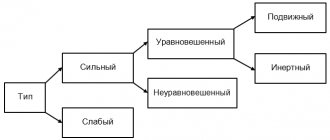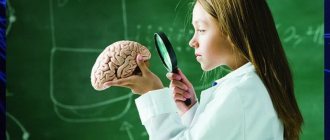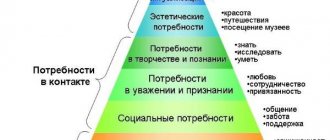20. The concept of a group. Classification of groups and their socio-psychological characteristics.
A group is a human community, distinguished on the basis of a certain characteristic, for example, class affiliation, the presence and nature of joint activities, characteristics of the organization, etc. Groups: 1. large (represented by states, nations, nationalities and classes).
Through these groups the influence of the ideology of society on the psychology of the people composing them is mediated. 2. small. composition from 2..3 to 20..30 people, whose members are united by common activities and are in direct personal communication (family, school class) - small conditional - small real (actually existing)
Small real ones are divided into:
1. laboratory (for the purpose of scientific research)
2. natural - formal (official: school class). Highly developed - informal (associations of interests: circle).
Underdeveloped.
Characteristics
Experts identify the following four main features of human activity, which determine its specificity and characteristics:
- Consciousness , since a person consciously sets a specific goal for his own activity and determines ways to achieve it.
- Productivity (activity always leads to the individual obtaining the final result he planned at the beginning of the activity).
- Transformation , i.e. people changing the surrounding reality or themselves.
- Social character , due to the entry of an individual in the process of activity into various relationships with other individuals.
21. The concept of a team and their classification. The relationship between the concepts of “group” and “team”
A team is a group where interpersonal relationships are mediated by the socially valuable and personally significant content of joint activities.
| In the diffuse group: | A team: |
| · a person’s position is unstable and uncertain, so he is timid and unsure of his actions; · the leader of the group is random, there is no guarantee that leadership will not be seized by a person of antisocial orientation; · attitude to the matter is regulated by the administration; for the majority - some kind of coercion; · treating the leader as a superior person vested with authority over everyone; · attitude towards the group is protective and defensive; · psychological tightness, stiffness, timidity towards oneself; · in relation to another - hidden aggression, competition. | · a person’s position is stable, definitely, therefore he is free in behavior; · the leader of the group is a person respected by the majority or everyone with a social and value orientation; · attitude towards the matter as personally significant for each member or for the majority; · treating the leader as the most experienced and skillful comrade whom the group has empowered; · open, friendly attitude towards the group; · in relation to oneself - free manifestation of the “I”, initiative; · in relation to another - acceptance as a given, friendship. |
Team requirements:
1. group must be effective in relation to core activities
2. the group must have high morals
3. create for everyone in the group the opportunity to develop as an individual.
4.be capable of creativity.
conclusions
Scientific and technological progress is rapidly changing the picture of reality familiar to many, affecting all areas of human activity - some of its varieties are consigned to history, others are replacing them. Nowadays, information activities are gaining more and more importance in the world, in which very substantial funds are invested annually, while funding for a number of other professions is steadily declining. At the same time, the usefulness and significance of various areas of information activity are not the same. Thus, activities aimed at making public and disseminating new knowledge bring enormous benefits to society, while advertising activities set purely commercial goals designed to increase sales of a particular product and increase the profits of its manufacturers. Consequently, any activity that is truly useful to society is adjacent to another activity that is beneficial only to certain people or companies.
22.Interpersonal relationships. Psychological climate and compatibility.
The degree of compatibility of people has the greatest influence on the psychological climate. Psychological climate is the emotional coloring of the psychological connections of team members, arising on the basis of their sympathy, coincidence of characters, interests, and inclinations.
Climate:
1. social: determined by awareness of the general goals and objectives of the organization
2. moral - based on the accepted values of the organization
3.psychological - informal relationships that develop between employees.
Psychological compatibility is the ability of people to be close for a long time, live, communicate and interact without clashing in character.
4 types of compatibility:
1.physical (harmonious combination of physical qualities2 or several people performing a joint action)
2.psychophysical (based on the characteristics of analytical systems and the nature of temperament)
3. socio-psychological (the relationship of people with such personal attributes that contribute to the enhanced fulfillment of social roles. harmony is required)
4. social-ideological (assumes a commonality of ideological views, similarity of social charters and values)
Knowledge, abilities, skills, habits
Knowledge, abilities, skills, or KUN – the basis responsible for organizing and managing practical activities.
Knowledge
These are images of sensations and perceptions, later processed into ideas and concepts. Without them, conscious, purposeful activity is impossible. Knowledge increases the effectiveness of actions.
Skills
This is mastery of a method of performing an action that does not require reinforcement with exercises. Conscious individual control is the main difference between skills. They are closely related to thinking and are impossible without active intellectual activity. Skills allow you to find a way out of non-standard situations and respond to changes in external conditions.
Skills
Skills are actions brought to automaticity. The success of an activity depends on skills. Skills are formed through exercise - repeated repetition of a specific action (actions). The skill is based on a dynamic stereotype, that is, a neural connection between the elements of the action. This happens uncontrollably, but if any inaccuracy occurs, the person immediately notices it. The stronger the nerve connection, the faster and better the action.
Skills can be motor, thinking, sensory, behavioral. The skill is formed in several stages:
- introductory (comprehension of actions, familiarization with implementation techniques);
- preparatory (conscious but inept execution of an action);
- standardizing (unity and automaticity of actions);
- situational (mastery of arbitrariness of action).
Learning new skills is always influenced by old ones. Sometimes this helps, and sometimes it hinders. In the first case we are talking about coordination of skills, in the second – about interference (contradiction). Skills are aligned when:
- the movement system of one skill coincides with the movement system of another;
- one skill is a means of better mastering another;
- the end of one skill is the beginning of another and vice versa.
Accordingly, interference occurs under the opposite conditions.
Habits
A habit is an action that has become a need. Habits can be positive and negative. Habits, like skills, are based on dynamic stereotypes. Habits are formed through:
- imitation;
- multiple random repetitions;
- conscious, goal-directed learning.
They can be a driving force or a braking factor when performing an activity.
23. Psychology of mass socio-psychological phenomena.
Mass psychological phenomena are the simultaneous manifestation of one of the sides by the consciousness of many people. These include:
1. public opinion (a single content judgment of the collective activities of individuals)
2.collective experience (identity of the emotional state of people belonging to a social community)
3. competition (interaction of individuals, teams, groups during which the desire of the parties to surpass each other’s results arises and is realized)
4.imitation (conscious and unconscious copying of a sample)
5.group activities
24.Methods for studying interpersonal relationships in production teams and their regulation
Interpersonal relationships are a reflection of objective connections and interactions between people who are members of the same group. The complexity of this phenomenon gives rise to many points of view. Interpersonal relationships can be divided into formal and informal. In the first case, they are determined by a certain formal organizational structure, in the second - by the desires, aspirations, and preferences of people. Official relations are documented and controlled; they are usually strictly regulated. Informal relationships may be recognized and even encouraged by the group, but they are not regulated by any official structure or documents.
There are 4 methods of study: observation method, experimental method, biographical and introspection
Relationships are also divided into business and personal. Business relations are again connected with some socially useful activity - labor, education, and are determined by it. Business relationships are also most often, but not always, secured by job descriptions, some rules, regulations.
Creative activity
A special type of activity is creativity - the process of creating something qualitatively new, never existing before. Artists, writers, and scientists are engaged in creative activities.
Creativity can also be considered as a component of other activities. So, our applicant from the example above can be creative in the process of preparing a resume and come up with a completely new approach that will captivate the employer.
The key abilities for creative activity are:
- combine existing knowledge;
- create new images in the mind (imagination);
- create vivid, strong ideas (fantasy);
- gain knowledge unconsciously (intuition).
We will help you consolidate new material in social studies lessons at the Skysmart online school.
Psychology of the management process.
Management psychology is a branch of psychology that studies the psychological patterns of management activity. The main task of management psychology is to analyze the psychological conditions and characteristics of management activities in order to increase the efficiency and quality of work in the management system. The management process is implemented in the activities of the manager, in which management psychology highlights the following points: diagnostics and forecasting of the state and changes of the management subsystem; formation of a program of activities of subordinates aimed at changing the states of the controlled object in a given direction; organization of execution of the decision. In the personality of a manager, management psychology distinguishes between his managerial needs and abilities, as well as his individual management concept, which includes a super task, problematic content, management plans and principles and rules of management internally accepted by the individual. The management subsystem studied by management psychology is usually represented by the joint activities of a large group of hierarchically interconnected managers. Basic methods of management psychology Management psychology as a science is based on various psychological methods, the main of which are observation and experiment.
By its nature and essence, observation is a complex objective psychological process of reflecting reality. Its complexity is determined by the fact that it is carried out in the natural setting of the functioning of the organization, in which the place and role of the researcher as an observer has a certain influence and impact on the observed, on the one hand, and on the selection and synthesis of information, on the other. In addition, in most cases, the role of the researcher is passive, since he only records the manifested opinion or attitude of people towards processes, facts and phenomena.
An experiment is one of the most unique and difficult to master methods of collecting information. Carrying out the experiment allows us to obtain very unique information, which is simply not possible to obtain by other methods. For example, in order to increase labor productivity, the enterprise decided to use a number of new forms of moral and material incentives. However, it is unclear whether this will lead to the desired result or, on the contrary, will it entail negative consequences and reduce the effect of using previously introduced and established forms of reward for conscientious work? Here an experiment comes to the aid of the manager, which, due to its capabilities, can “play out” a certain situation and “give out” valuable information. The main purpose of it is to test hypotheses, the results of which have direct implications for practice and various management decisions.
Motivational needs
This concept is so important from the point of view of mental processes that there are numerous theories of human motivation. One of the most famous is Abraham Maslow's hierarchy of needs theory. According to this system, it is the needs that are the internal driver of the individual, they encourage him to create and be creative, and the structure of human activity is based on them. Maslow's scheme consists of several levels:
- The desire to satisfy the physiological need for food, home, warmth.
- Existential needs: safety of life, inviolability of housing, presence of a predictable future.
- Social security: the need for love, the need for people, belonging to a social group.
- Spiritual needs in creativity.
- Cognitive needs.
- Aesthetic. This is the desire for harmonization of the internal and external world, for beauty.
- The need for self-actualization (a person wants to have status, recognition, strives for full self-expression).
All needs that aim at the personal well-being of an individual are basic, primary. The level of a person’s need for recognition by society, the desire to lead a social life - all this is secondary. Such needs are formed when basic ones are satisfied.
Professionally important personality traits of a leader. Leader and manager
Experts have divided all the qualities of a leader into three large groups: personal, business and professional. The combination of the qualities of all three groups is a necessary requirement that a leader of any rank in any organization must meet. The personal qualities of a leader are those that help to gain respect and authority among employees. Among them are responsiveness, willingness to help, self-confidence, benevolence and optimism in any situation, culture and high moral values, care for one’s physical and mental health. Business qualities of a manager are the ability to organize work, distribute responsibilities, leadership, communication skills, persuasiveness, initiative and self-control. Together, these characteristics show the level of competence and organizational abilities of the manager, how well he is ready to cope with the tasks assigned to him. The professional qualities of a manager are good specialized education, erudition, competence in his profession, high learning ability, as well as the ability to plan his work. It is these qualities that ensure his success in a specific position held. The higher the level of management, the more demands are placed on such psychological qualities of the boss as perseverance, determination, responsibility. All these qualities of a leader together create exactly the image that effective leaders strive to meet . This image, in turn, leads to the formation of a positive image of the manager.
| leader | supervisor |
| Manages interpersonal relationships | Maintains official relations |
| Determined spontaneously | Appointed or elected |
| Pulls out depending on your mood | Has a stable position |
| Does not have a sanctions system | Has a certain system of sanctions |
| Scope of action - any community | The scope of action is determined by laws, instructions, regulations |
Means to achieve the goal
So, I see the goal. I'm going to see her. At this stage we choose the means to achieve what we want. By means here we mean anything - anything that will help you achieve your goal. If you want to become a good cook, you will have to graduate from culinary school, gain experience, and constantly improve your skills by learning new skills.
It is important to know: firstly, the means and the end must be proportionate . For example, you want to make money, you open a personal business (flower shop), but in the end your enterprise operates at a loss. A reasonable person understands that in this way he will never improve his well-being and will try something else - the means will not justify the end.
Secondly, the means must be in the moral category . If this is not so, then all human activity is immoral. Violating the law, lying to achieve personal gain, betraying loved ones for the sake of your goal is immoral. In this case, the end does not justify the means.
Management styles
Authoritarian management style. The authoritarian management style is quite rigid. A leader who adheres to an authoritarian style strives to manipulate and dominate subordinates. He single-handedly makes all management decisions and strictly controls the implementation of the tasks assigned to him. The use of an authoritarian style is possible, and sometimes necessary, in such situations as: lack of order and discipline in the team, the existence of a strict time limit for making some important decisions or introducing changes, the existence of difficult conditions for the functioning of the organization, etc.
disadvantages: - deterioration of discipline in the team - decrease in labor efficiency - staff turnover - lack of creative initiative.
Democratic management style Control over the completion of tasks in a democratic management style is moderate, often based on the self-control of performers, and various incentives are present. The leader in this style of management is friendly, open in communication, tolerant of criticism, delegates authority, tries to create in his subordinates a sense of belonging to the common cause, a spirit of cooperation, and mutual understanding in the team.
Liberal management style. A leader in a liberal management style avoids making any strategically important decisions, is indifferent to criticism, he is not interested in the needs of his subordinates, he does not clearly distribute tasks, responsibilities and rights between them, control on his part is, as a rule, insignificant.
Examples of similar educational works
Study of professionally important qualities of middle managers
... activities, we were able to analyze professionally important qualities as a general and quite significant factor in the success of middle managers. Research methods and techniques: — Expert assessment; — Method of polar groups; ...
Leadership Qualities
... A leader loves people. If the manager's job is to manage people, ... attitudes to various phenomena - the organization's mission, planning, motivational policy, productivity, quality of work ... collective activity. So...
Professional qualities of a leader, psychological characteristics and methods of formation...
... formation of the leader’s personality as a subject of management. Subject of research: professionally significant qualities of a leader. personality leader psychological gender Research hypothesis: the effectiveness of the leader is ...
Educational activities of children in early age groups
... Educational activities of children in early ... development groups. It is not enough to be born a human to become one. ... children's activities: motor, including those associated with performing exercises aimed at developing such physical qualities, ...
Communication qualities of a leader
...organization and management of team activities. In a market economy, the requirements for the business qualities of a manager change. According to statistics, in our country there are more than 10 million leaders of various status groups. But the leader is...
Motive
The motive forms the goal, as the structure of the activity shows. The diagram clearly demonstrates the importance of this element. It should be added that all needs are inherent in human nature. But the leading motivator will be the one that solves the most pressing problems in achieving personal goals.
Motive, if we characterize it briefly, is the meaning of a person’s activity, his activity.
In order to understand what a motive for activity is, let’s look at an example.
If a person strives to become a leader, his goal is to acquire the status of a boss, the motive is to satisfy the need for recognition, the result is a high position. In real life, everything is not so schematic and primitive, of course. Motives are often multi-level, as are goals.










